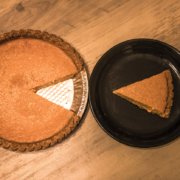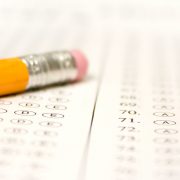Unlike the math and writing portions of the SAT, the SAT reading section doesn’t require you to bring any outside knowledge to the test. You don’t need to know grammar rules or algebra—you just need to know how to read. For those of you who hate reading, that’s easier said than done. But with a few sound SAT reading strategies in your back pocket, you too can get a high score on the SAT reading section.
#1: Time Yourself
This SAT reading strategy is all about time management. A big part of succeeding on SAT reading is beating the clock. You have 65 minutes to read five passages and answer 52 questions.
65 minutes might sound like a pretty long time, but it goes fast. The key is to pace yourself to avoid having to rush through the last one or two passages.
Using a watch with no bells or whistles (smart watches aren’t allowed on test day), time yourself while you practice. Give yourself 12 minutes per passage, including answering questions. At 12 minutes, move on whether you’re finished or not.
12 minutes per passage leaves you with 5 minutes at the end to go back and answer questions you skipped or reexamine questions you’re less sure about.
#2: Tackle the Easiest Passages First
Every SAT reading test will include a literature passage, two science passages, and two history or social studies passages. One of the social studies passages will be a Founding Document or Global Conversation passage—a speech or text important to U.S. and/or global progress (for instance, an excerpt from the Declaration of Independence or a speech by Nelson Mandela). One of the social studies or science passages will be a paired passage.
Know your strengths and weaknesses. Most students find these passages to be the trickiest:
- Literature (especially if it uses old school language or has a lot of deeper meaning)
- Founding Documents/Global Conversation (more likely to include archaic language or complex ideas)
- Paired passages (there’s more to unpack, and you have to keep track of two theses at once)
Sometimes the SAT sticks the toughest passage in the very beginning of the section. If you work through the passages in order, you risk getting bogged down in that first passage, losing precious time that you could have spent getting more questions right on later passages.
There’s a trick to making this SAT reading strategy work for you: You need to be particularly careful when bubbling in your answers. Make absolutely sure that each bubble corresponds with the correct question—otherwise, this tip will backfire in a big way!
#3: Find the Passage Strategy that Works for You
There are tons of SAT reading strategies to tackle passages, and what works for one student won’t necessarily work for another, so there’s a certain amount of trial and error in finding the right strategy. Some popular strategies include:
- Reading the questions first, then the passage
- Skimming the passage first, then working through the questions
- Going back and forth between questions and passage
#4: Be Like a Shark—Keep Moving
Fun fact: Many types of sharks must swim constantly in order to breathe. If they stop moving, they die.
For the purposes of the SAT reading section, be one of those sharks. Keep moving.
If you get stuck on a question, make your best guess and move on. When you bubble in your guess, mark it dark enough to be read by the scanner but light enough that you can quickly erase it if you have time to revisit the question later. Mark the question in your test booklet so that you know you want to revisit it.
Maintain Focus
If you find yourself zoning out (it happens!), shift positions and take a deep breath. Getting some oxygen up to your brain should help you refocus and get through the section.
Remember to practice with different SAT reading strategies until you find the one that works best for you! Visit your local C2 center for a practice test and find out how you can maximize your SAT score.









